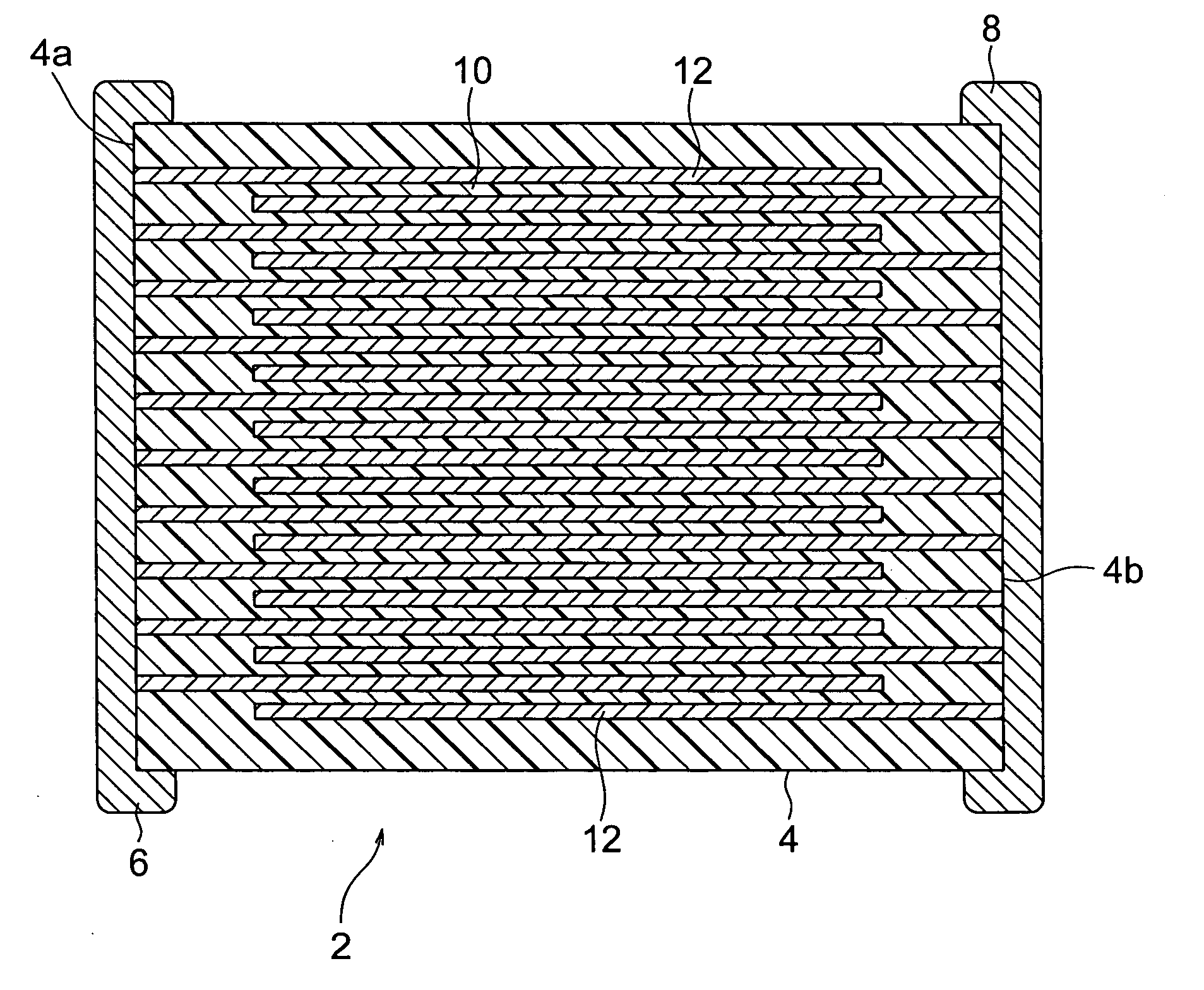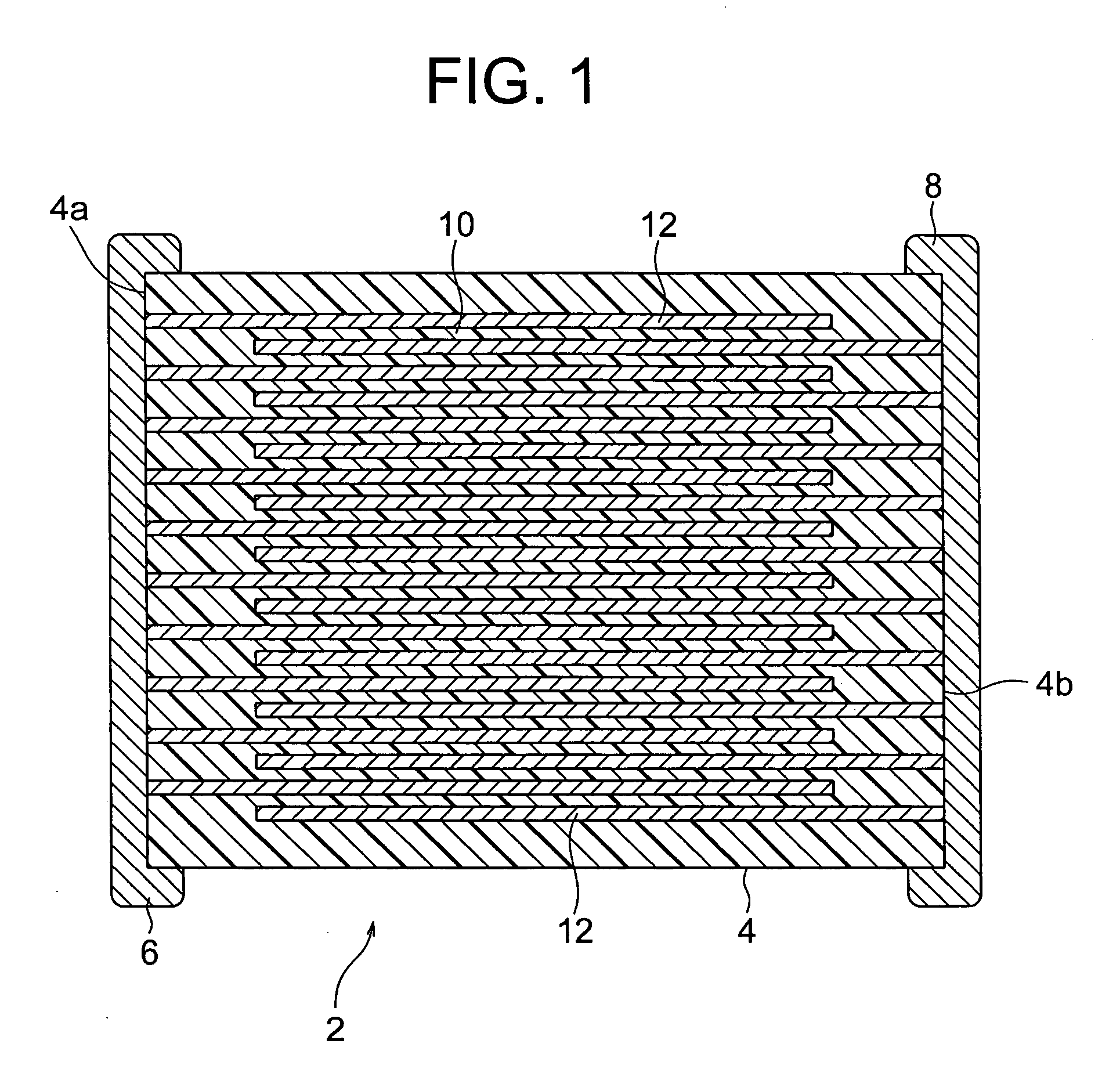Inhibitor particles, method of production of same, electrode paste, method of production of electronic device
- Summary
- Abstract
- Description
- Claims
- Application Information
AI Technical Summary
Benefits of technology
Problems solved by technology
Method used
Image
Examples
example 1
[0104] 1 g of Pt chloride hydrate was dissolved in 1 liter of water, 1 g of PVA with a saponification degree of 88 mol % (one example of a water-soluble polymer compound) (0.1 wt % with respect to Pt chloride aqueous solution) was added, and the mixture was vigorously stirred to prepare a Pt chloride aqueous solution. Next, dielectric powder having an average particle size of 50 nm was charged in an amount of 3 g into the Pt chloride aqueous solution which was then stirred to prepare an aqueous dispersion. Note that the dielectric powder used was BT-005 (made by Sakai Chemical Industry).
[0105] Further, separate from this aqueous dispersion, hydrazine hydrate 80% in an amount of 0.47 g was added to 470 ml of water to prepare a uniformly mixed hydrazine aqueous solution.
[0106] Next, while vigorously stirring the previously prepared Pt chloride aqueous solution containing the dielectric powder at room temperature, the hydrazine aqueous solution was gradually added at a rate of about ...
example 2
[0108] Except for replacing the PVA with another example of a water-soluble polymer compound, that is, a copolymer of methyl acrylate and acrylic acid (acid value 10 mgKOH / g, molecular weight 100,000), the same procedure was followed as in Example 1 to produce inhibitor particle powder which was observed in the same way as in Example 1.
[0109] The heat treated powder obtained in this example was observed by a scan type electron microscope, whereupon there was no segregation of Pt. Further, this was observed by a-TEM, whereupon it was confirmed that the surfaces of the dielectric particles had tens of Pt particles of 5 nm or smaller size bonded to them.
example 3
[0110] Except for replacing the PVA with an acetylene diol-based nonionic surfactant (HLB value 10), the same procedure was followed as in Example 1 to produce an inhibitor powder which was observed in the same way as in Example 1.
[0111] The heat treated powder obtained in this example was observed by a scan type electron microscope, whereupon there was no segregation of Pt. Further, this was observed by a TEM, whereupon it was confirmed that the surfaces of the dielectric particles had tens of Pt particles of 5 nm or smaller size bonded to them.
PUM
| Property | Measurement | Unit |
|---|---|---|
| Temperature | aaaaa | aaaaa |
| Fraction | aaaaa | aaaaa |
| Fraction | aaaaa | aaaaa |
Abstract
Description
Claims
Application Information
 Login to View More
Login to View More - R&D
- Intellectual Property
- Life Sciences
- Materials
- Tech Scout
- Unparalleled Data Quality
- Higher Quality Content
- 60% Fewer Hallucinations
Browse by: Latest US Patents, China's latest patents, Technical Efficacy Thesaurus, Application Domain, Technology Topic, Popular Technical Reports.
© 2025 PatSnap. All rights reserved.Legal|Privacy policy|Modern Slavery Act Transparency Statement|Sitemap|About US| Contact US: help@patsnap.com



